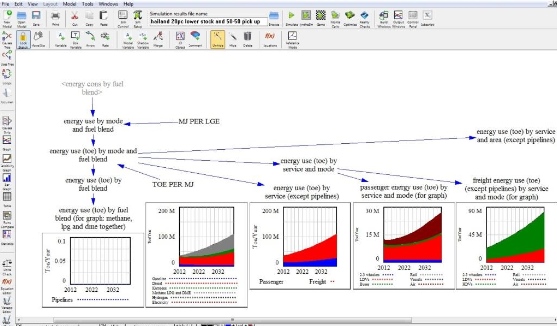ForFITS Model - Assessing Future CO2 Emissions
 The ForFITS Model is meant to foster sustainable transport policies For Future Inland Transport Systems (and therefore named ForFITS), and is capable of assisting users in making informed decisions about measures available for the reduction of CO2 emissions in the transport sector. Users of the tool can compare the projections between a baseline scenario and scenarios where proposed transport policies are implemented and estimate the amount of emissions that can be "saved" by their implementation in the future. Results of these analyses can be used to support the implementation of future transport policies that are likely to be effective in reducing CO2 emissions.
The ForFITS Model is meant to foster sustainable transport policies For Future Inland Transport Systems (and therefore named ForFITS), and is capable of assisting users in making informed decisions about measures available for the reduction of CO2 emissions in the transport sector. Users of the tool can compare the projections between a baseline scenario and scenarios where proposed transport policies are implemented and estimate the amount of emissions that can be "saved" by their implementation in the future. Results of these analyses can be used to support the implementation of future transport policies that are likely to be effective in reducing CO2 emissions.SafeFITS - A road safety decision-making tool
Road accidents constitute a major social problem in modern societies, accounting for more than 1 million accidents per year in EU-28 (2,900 per day), resulting in 1.4 million injuries and 26,000 fatalities (70 per day) (WHO, 2015). Road traffic injuries are estimated to be the eighth leading cause of death globally, and more than half of the people killed in traffic accidents are young adults aged between 15 and 44 years. In low- and middle-income countries, the rates of road traffic injuries are twice those in high-income countries and still increasing. This can be partly attributed to rapid motorization in many developing countries, without any investment being made in road safety. Current trends suggest that, unless action is taken, traffic injuries will become the fifth leading cause of death by 2030, with the disparity between high- and low-income countries further increased (WHO, 2015). Within the above road safety context and using For Future Inland Transport Systems (ForFITS) principles, the project Safe Future Inland Transport Systems (SafeFITS) aims to facilitate knowledge-based transport policy decision-making related to reducing road traffic injuries.